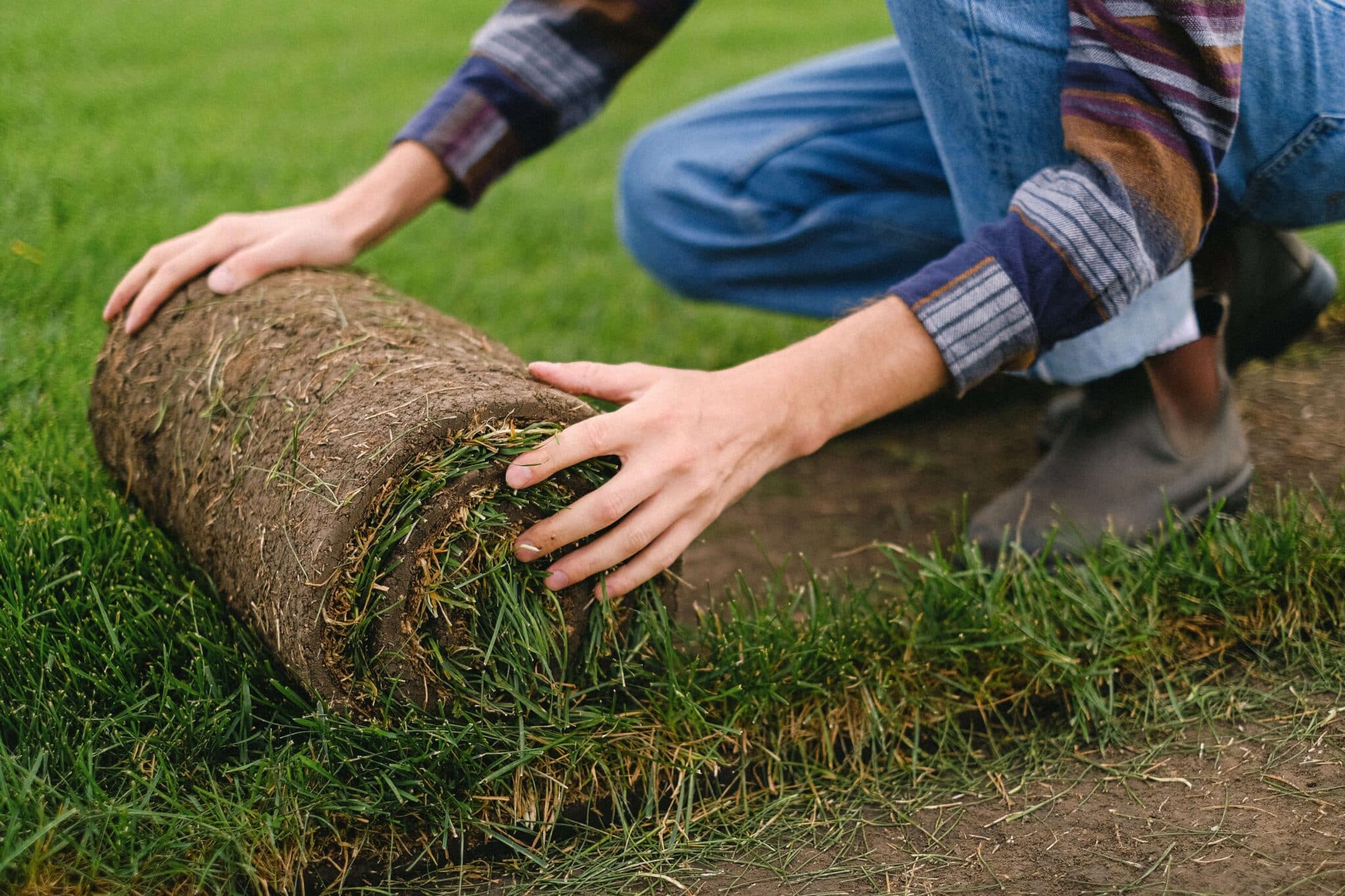How to Lay Sod
Whether your project is commercial or residential, using sod is often the quickest and easiest route to establishing a lawn. This is particularly true in areas where wind and potential soil erosion is a factor, because seed can be blown or washed away before it has a chance to become established in the ground. Sod allows you to kick start your lawn growth, because most of the work has already been done for you.
However, whether you hired installation professionals or you’re tackling this task yourself, once the sod arrives, there’s a lot of work to be done. Here are steps for laying sod efficiently and effectively.

How to Lay Sod
Here are some things to consider before you buy:
- Do your homework: What kind of sod is recommended for your area? What kind will tolerate the climate and will still give you the look and texture that you want?
- Find a sod type that will be right for your level of yard care interest: If you want to putter in the yard every weekend then finicky grass that needs constant tending is for you. If you would rather only rev up the mower once a month or so, then a lower maintenance type of lawn is right for you. It is possible to have a low maintenance lawn that’s attractive; it is just a matter of proper research.
- Get suggestions from neighbors and from your county’s extension agency: Before buying sod, ask questions and get tips about what grows best in your area and what will struggle.
PREP WORK IS KEY
The area to be sodded should be prepared at least two to three days before the sod is delivered.
– Level the ground using a rake. Remove any rocks or large stones. You may need to dig high patches out with a shovel. Your goal is ground that is as flat and even as possible.
– Water the ground so that it is moist. Your goal should be damp ground that is not soggy but also not dry. It should also be in this condition on the day of sod installation. Water deeply one to two days before your delivery.
– Fertilize the soil. You won’t need to do anything beyond spreading your fertilizer at this point.
THE DAY OF DELIVERY
You should be ready to get started on laying the sod early in the morning, especially in areas with extreme temperatures.
Check that the sod is cool and moist to the touch. If you need to, sprinkle it with water to keep it cool, but do not allow it to become soaked.
Your first row of sod should be placed along a straight edge wherever possible. For instance, along a sidewalk or against a building will be perfect. Make sure that you are getting the sod pieces as tightly against the edges as possible or it might dry out and the roots will die.
The edge of the second piece of sod should be placed as closely as possible to the first without overlapping or crowding. You should not be stretching the sod in any way. Stagger the ends as if you were laying bricks and remember that it is the edges that dry out first.
It is important that you level the ground as you go. Working on a board will keep the ground from being torn up but you still may need to use the backside of a rake to continually level. This prevents hills, bumps and other defects in the sod. If you need to do so, you can carefully peel back previously laid sod pieces so that you can smooth out the ground.
Once you get to the end of a row, roll the sod out and over the edge and then cut off the excess with a very sharp knife. Be careful to cut and not just tear or you can damage the other areas of sod.
FINISHING TOUCHES
Once the sod is in place, here are some final touches to make the area look great and thrive.
CUTTING AROUND SPRINKLERS
If you have to lay sod around in-ground sprinklers, fountains or trees you can do so by cutting the proper sized holes for these items.
SOD GAPS OR SEAMS
Lay quality soil or other organic material in any gaps or seams in your sod. You cannot use leftover pieces of sod because they will dry out far too quickly. Potting soil or peat moss are both good choices for this process.
LAWN ROLLER
Roll the entire area with a roller filled with water. Do not push down with the roller or you may damage the sod. The benefit of the roller is to ensure that the ground is leveled and to make sure there is good contact between the soil and the roots. Find the best lawn roller here.
ADD WATER
Water the newly installed sod very deeply especially in dry areas or areas with no rain in the forecast for several days. The goal is to water so deeply that there is wet soil six to eight inches beneath the new sod. This will help the roots work their way into the soil and will also help them get the fertilizer that they need. Check the depth of the water beneath the ground using a stiff wire and check for several days or until the roots are established. In very hot climates, you may need to re-water the new sod for several days just to be sure that the roots are taking hold and are healthy and strong.
Depending on the climate and the type of sod as well as the condition of the soil, your new lawn should be healthy, green, and growing in as little as a few days. You should be carefully monitoring your grass for signs of struggle so that you can address it quickly. Once it is established, most types of sod are fairly hands off, only needing a quick mowing and maybe an occasional watering if there has been no rain.







